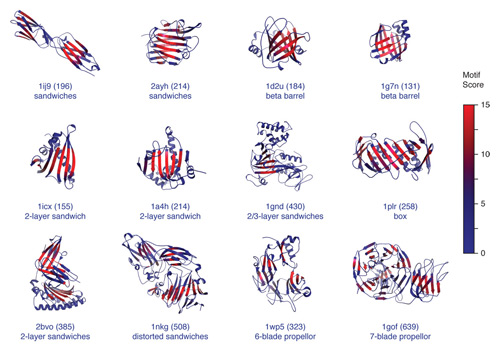Much like a dancer may strike specific poses, with each extremity positioned just so, a protein may adopt certain conformations. When these conformations succeed each other, the result is a kind of dance, one that mediates fundamental biochemical processes, such as signal transduction and allostery. Dancing proteins may have partners, of course, including drugs.
Finding drugs that may be suitable dance partners for proteins has been difficult. Proteins, shall we say, dance in the dark, due mainly to limitations in their direct detection. By finding a way to overcome these limitations, researchers at the Institute for Research in Biomedicine (IRB) in Barcelona have effectively turned a spotlight on proteins. Having done so, these researchers now propose that drug design may be reimagined as a kind of choreography.
On the basis of a detailed analysis of protein structures deposited in the protein data bank, as well as on state-of-the art molecular simulations, Xavier Salvatella, Ph.D., and Modesto Orozco, Ph.D., provide general evidence for the transfer of structural information by correlated backbone motions, mediated by hydrogen bonds, across β-sheets.
“We are discovering the information transmission pathways inside proteins. This concept, which we have validated for one kind of protein structural motif, allows us to speculate that proteins have many valid surfaces on which a drug can act,” related Dr. Salvatella.
A team of scientists led by Drs. Salvatella and Orozco has discovered how the motions of various parts of proteins, although physically far apart, are correlated. “The same thing happens to proteins as happens to the choreography of ballet dancers, where the movements of the participants are interconnected in spite of being physically apart,” continued Dr. Salvatella. “If the first one lifts an arm, the last one lifts an arm, too.”
The researchers presented their findings June 11 in Nature Communications, in an article entitled “Correlated motions are a fundamental property of β-sheets.” According to this article, the researchers also showed that local and long-range correlated motions are mediated by the collective motions of β-sheets. Moreover, the researchers investigated the role these motions played in large-scale conformational changes. Correlated motions, the authors noted, represent a fundamental property of β-sheets that contributes to protein function.
Such findings hint at another way to think about drug development. Drugs act on a certain site or active domain of a target protein in a given disease. In most infectious diseases and in cancer, one of the problems is that the site where the drug interacts evolves and mutates and the drug is rendered inefficient.
According to the concept that has been developed by the IRB Barcelona researchers, the site where the drug was headed is equally as valid as any other point along the transmission pathway. “If this were this case, we would be able to find many sites within the structure of a protein that would be equally or more efficient at interacting with a drug,” asserted Dr. Salvatella. “Sites that, although lying far from the key or functional site of the protein, would have the same effect.”
The scientist goes on to explain that there are already many drugs that act at sites that are not the actives sites but that these drugs have been discovered by serendipity, through massive screenings of molecules and observing that they bound to an unexpected site.
“This system is clearly not efficient. We have to be able to organize it. If we manage to do this, then we will have a potent way to discover new drugs,” explained Dr. Salvatella. In addition to furthering the conceptual field, Dr. Salvatella is working with proteins of biomedical interest. “We already know enough to study in parallel the pathways of proteins of biomedical interest. If we are successful, we will have reached a gold mine for drug discovery.”



